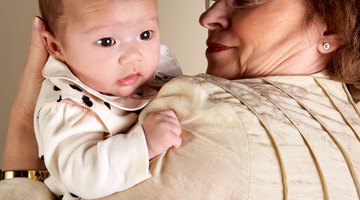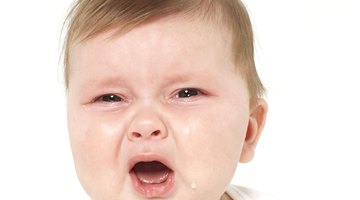How to Know Your Baby Is Done Burping
With her immature digestive system, your baby may experience painful gas issues if you don’t take the time to help her bring up air bubbles after she eats. Although the way you feed your baby plays a part in how much gas she experiences, most babies need to release some trapped air after eating. As you burp your baby, pay attention to her cues so you will know when she’s finished burping.
Pay attention to the way your baby eats to determine when to take a break for burping. Attempt to burp your baby after he consumes between 2 and 3 ounces of formula or between breasts if breastfeeding, according to the American Academy of Pediatrics. Burping regularly during a feeding ensures that your baby does not consume too much liquid without releasing air bubbles.
Hold your baby in a burping position to burp her – with your baby upright against your chest, sitting in your lap or laying across your lap on her tummy, advises the KidsHealth website.
Listen to the noises your baby makes when he needs to burp, suggests Priscilla Dunstan, author of “Calm the Crying.” You may hear little grunting sounds that occur from slight discomfort. If your baby is more uncomfortable, the sounds may be longer and louder.
Jiggle your baby gently, pat or rub his back or bounce him up and down gently to dislodge the trapped air. Continue encouraging your baby’s body to release the air until you hear a burp.
Cue in to the way your baby’s body feels in your arms and the sounds she continues to make. After your baby releases all the trapped gas inside and is finished burping, you should notice that your baby feels more relaxed and any noises suggesting discomfort – grunting or fussing – stop.
Continue to burp your baby if she still feels tense and if she still makes grunting noises.
Tips
The indication that your baby has finished burping does not rest on the size or the sound of the burp. Instead, the indication that your baby is done includes how your baby acts and feels. (ref 3)
Related Articles
- HealthyChildren.org: Burping, Hiccups, and Spitting Up
- KidsHealth: Baby Basics: Burping Your Baby
- Calm the Crying; Priscilla Dunstan











